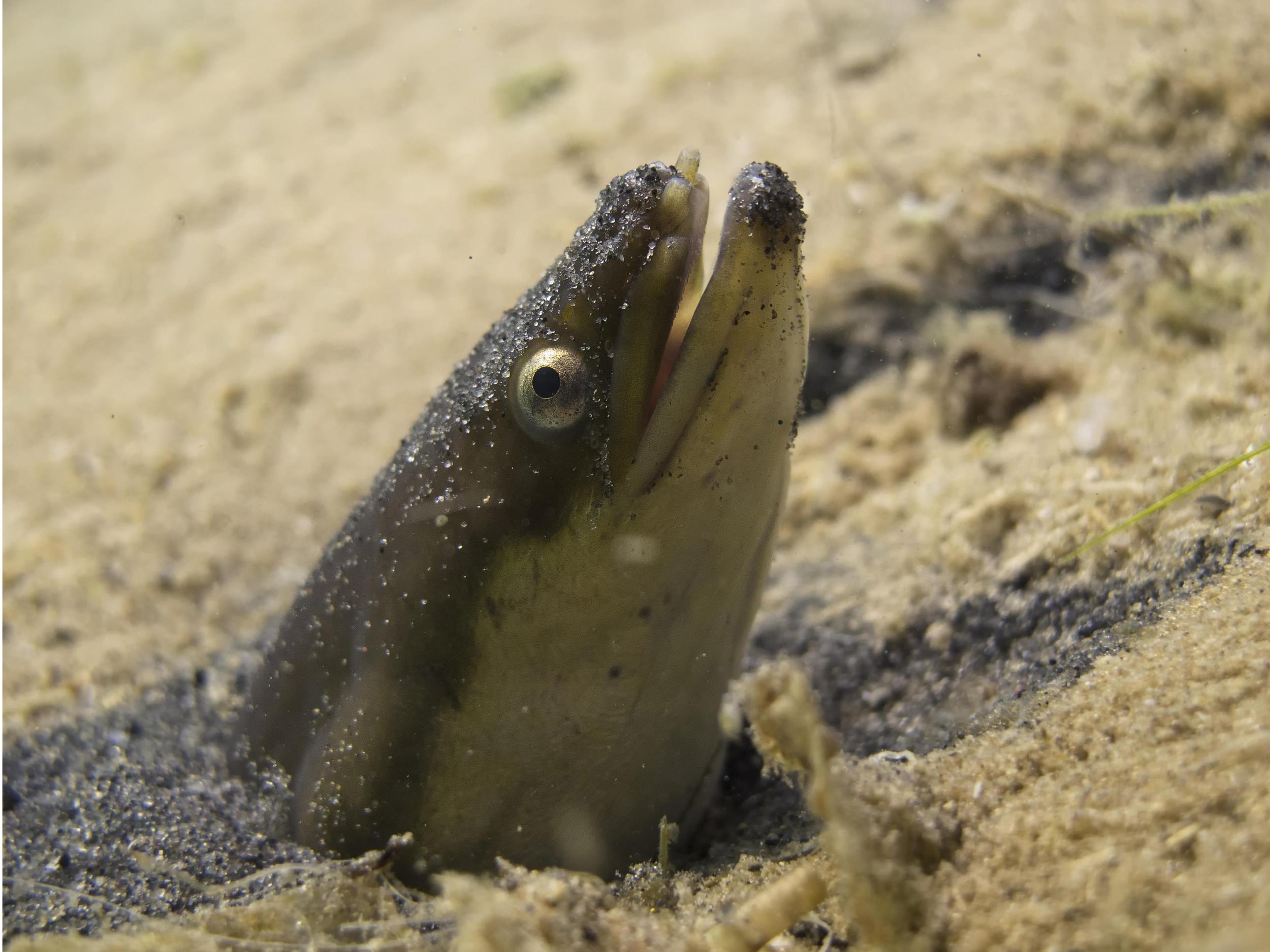Eels are getting high on cocaine in Britain's drug-polluted rivers, say researchers
Survival of critically endangered species may be threatened by drug-contaminated waters

Your support helps us to tell the story
From reproductive rights to climate change to Big Tech, The Independent is on the ground when the story is developing. Whether it's investigating the financials of Elon Musk's pro-Trump PAC or producing our latest documentary, 'The A Word', which shines a light on the American women fighting for reproductive rights, we know how important it is to parse out the facts from the messaging.
At such a critical moment in US history, we need reporters on the ground. Your donation allows us to keep sending journalists to speak to both sides of the story.
The Independent is trusted by Americans across the entire political spectrum. And unlike many other quality news outlets, we choose not to lock Americans out of our reporting and analysis with paywalls. We believe quality journalism should be available to everyone, paid for by those who can afford it.
Your support makes all the difference.Cocaine flushed into rivers is making critically endangered eels “hyperactive” and threatening their survival, new research suggests.
Traces of the drug routinely make their way into Britain’s waters after passing through users’ bodies, and could be causing serious health problems for some fish, according to the study.
Previous research has found residues of illegal drugs including cocaine, amphetamines and ecstasy in European lakes and rivers, including the Thames.
The drugs end up in surface waters in highly populated areas after passing through sewage treatment plants, but scientists say little is known about the ecological impact.
In the new study, biologists at the University of Naples Federico II put European eels in water containing a small dose of cocaine – similar to the amount found in rivers – for 50 days.
They found the fish “appeared hyperactive” compared to eels which had not been kept in waters containing cocaine.
The drug accumulated on the brain, muscles, gills, skin and other tissues of the cocaine-exposed eels, researchers said.
The eels' skeletal muscle showed evidence of serious injury, including muscle breakdown and swelling, which had not healed 10 days after they were removed from the drug-contaminated water.
“This study shows that even low environmental concentrations of cocaine cause severe damage to the morphology and physiology of the skeletal muscle of the silver eel, confirming the harmful impact of cocaine in the environment that potentially affects the survival of this species,” said the authors of the study, published in Science of the Total Environment.
European eels spend their first five to 20 years in fresh or brackish water before migrating more than 3,700 miles to their breeding ground in the Sargasso Sea, a region of the north Atlantic Ocean. From there, the eels’ larvae drift for nearly a year back towards Europe.
But numbers of young eels arriving in the continent have dwindled by more than 90 per cent since the 1980s, according to the IUCN “red list” of threatened species.
Anna Capaldo, a research biologist and lead author of the study, said the increased dopamine levels caused by cocaine may stop eels reaching sexual maturity.
“It is likely that in this condition, the reproduction of the eels could be impaired,” she told National Geographic.
She added: “All the main functions of these animals could be altered.”
In 2015, scientists at the European Monitoring Centre for Drugs and Drug Addiction revealed London to have Europe’s highest concentration of cocaine in sewage, with average daily concentration of the substance in waste water at 737mg per 1,000 people.
In 2005, a team of researchers in Italy found large quantities of a cocaine by-product called benzoylecgonine - found in the urine of the drug users - in the River Po in northern Italy, carrying the equivalent of nearly 4kg (8.8lb) of cocaine on a daily basis.
Join our commenting forum
Join thought-provoking conversations, follow other Independent readers and see their replies
Comments